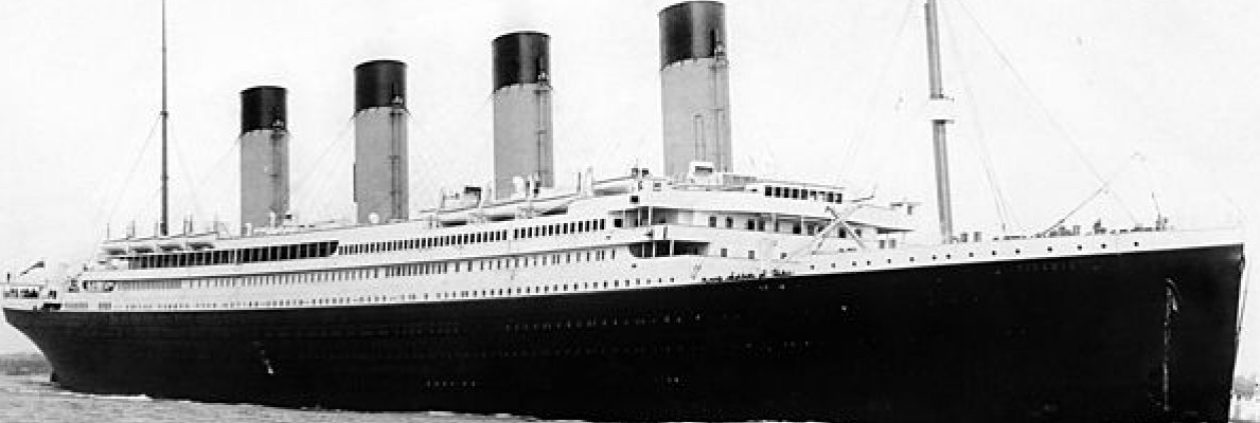Joshua Williams, “St. John’s Newest Attraction: The Titanic and Iceberg Exhibit,” The Muse, last modified July 7, 2025, https://themuse.ca/st-johns-newest-attraction-the-titanic-and-iceberg-exhibit/.

Robert John Welch (1859-1936), official photographer for Harland & Wolff
Public Domain/Wikimedia Commons
St. John’s is the nearest major centre to the wreck of the Titanic and has been the place of departure of Titanic expeditions for years. This includes the infamous Titan submersible in the summer of 2023. This makes St. John’s a prime location for Titanic Tourism. In May of 2025, a brand-new exhibit on The Titanic the opened its doors on Water Street. Owned by Titanic diver Larry Daley, the Titanic and Iceberg Exhibit is a place full of information, replicas, models, props from the 1997 James Cameron Titanic film, and even a controllable R.O.V. When walking down the stairs towards the exhibit, explorers will be greeted with an orchestral version of “My Heart Will Go On” by Celine Dion. This song is on a loop in the exhibit.
The exhibit is open daily and costs C$17.00 for general admission. For more information go to www.titanicstjohns.ca.
=
Joseph Connell, “Ireland’s Titanic: The Tragic Sinking of the RMS Leinster in 1918,” IrishCentral.Com, last modified July 7, 2025, https://www.irishcentral.com/roots/history/rms-leinster.

Author Unknown
Public Domain via Wikimedia Commons
On the morning of October 10, 1918, the RMS Leinster set sail from Kingstown to Holyhead, packed with civilians, postal workers, and military personnel. Within the hour, she was torpedoed by a German U-boat—her destruction swift, her loss devastating. There were almost 500 military personnel from the British Army, the Royal Navy, and the Royal Air Force. Just before 10 a.m. as the Leinster was sailing east of the Kish Bank in a heavy swell, passengers saw a torpedo approach from the port side and pass in front of the bow. A second torpedo followed shortly afterward, and it struck the ship forward on the port side in the vicinity of the mail room. Despite the heavy seas, the crew managed to launch several lifeboats and some passengers clung to life rafts.
=
Jordan Runtagh, “Titanic’s Last Secrets: Inside the Race to Save Ship’s Final Treasures Before They’re Lost Forever (Exclusive),” People, July 6, 2025, https://www.aol.com/titanic-last-secrets-inside-race-170000472.html.
These installations are impressive, but it’s the 350 artifacts recovered from the wreck site that anchor the exhibit in sobering reality. They’re a study in extremes — the large and the small, the mechanical and the personal, the ravaged and the pristine. Gilded chandeliers are twisted beyond recognition, a reminder of both the tremendous violence of the sinking, which tore the ship’s steel hull like paper, and the immense pressure bearing down at such depths. Yet fragile objects like china, crystal and actual paper escaped the devastation entirely. Heavy metal pots are corroded almost to the point of disintegration, while nearby playing cards — the four of hearts, ace of spades and nine of diamonds — appear untouched. A waiter’s notepad is still legible. A champagne bottle remains sealed, its cork intact and its vintage contents still (theoretically) drinkable.
Suggested Reading
Marshall, L. (2019). Sinking of the Titanic: The Greatest Disaster At Sea – Special Edition with Additional Photographs. Independently Published.
Rossignol, K. (2012). Titanic 1912: The Original News Reporting of the Sinking of the Titanic. Createspace Independent Publishing Platform.
Wilson, A. (2012). Shadow of the Titanic: The Extraordinary Stories of Those Who Survived. Simon and Schuster.
Titanic News Channel is a participant in the Amazon Services LLC Associates Program, an affiliate advertising program designed to provide a means for sites to earn advertising fees by advertising and linking to Amazon.com.










